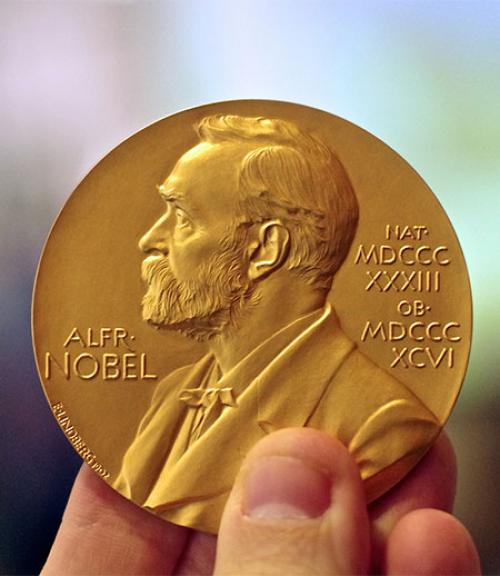Arthur Ashkin, Ph.D. ’52, whose invention of “optical tweezers” realized his own science fiction dream of being able to move objects with light, was among three physicists named by the Royal Swedish Academy of Sciences as winners of this year’s Nobel Prize in physics. The announcement was made Oct. 2 in Stockholm.
Ashkin, who at age 96 sets a record as the oldest Nobel winner in the award’s 112-year history, shares the award with Gérard Mourou of both École Polytechnique, Palaiseau, France, and the University of Michigan; and Donna Strickland of the University of Waterloo, Canada, for their method of generating high-intensity, ultra-short optical pulses.
Ashkin, who lives in Rumson, New Jersey, will receive half of the $1.01 million prize; Mourou and Strickland will share the other half. Strickland is just the third female Nobel physics laureate, and first since 1963; there have been 210 winners in all.
Born Sept. 2, 1922, in New York, Ashkin received his bachelor’s degree from Columbia University in 1947. He studied in a Cornell physics department that included professors Hans Bethe and Richard Feynman, who both won the Nobel Prize in physics (Bethe in 1967, Feynman in 1965).
In 1952, Ashkin joined Bell Telephone Laboratories, where he spent the next 40 years. He was the head of the Department of Laser Science from 1963 to 1987, in between stints as a member of the technical staff.
Ashkin had been experimenting with “single-beam gradient-force trapping” (what became known as optical tweezers) for more than 15 years when, in 1987, the breakthrough came: Ashkin used the tweezers to capture living bacteria without harming them. He immediately began studying biological systems; optical tweezers are now widely used to investigate the machinery of life.
Steven Adie, assistant professor in the Meinig School of Biomedical Engineering, was inspired by Ashkin’s early work to come up with a way to use pressure from pulses of laser light to create sub-nanometer shifting of micron-sized particles embedded in soft tissue-like media.
“I’m extremely delighted to hear that Arthur Ashkin has won the Nobel Prize,” Adie said. “His work on the development of optical tweezers has had a transformative impact on the biological sciences at the nano-to-microscale.”
A 1997 paper on stretching DNA with optical tweezers – authored by Michelle Wang, professor of physics – was cited in the Nobel Prize announcement.
“I am totally thrilled that Arthur Ashkin’s work has been recognized in this way,” Wang said. “The ability of optical tweezers to manipulate at the micron and nanoscale level has added an entirely new dimension to how we investigate fundamental biological processes.
“Arthur Ashkin’s work,” she said, “has served as the foundation and inspiration for my work on precision mechanical biophysics.”
Ashkin, a member of the National Academy of Sciences, is the 50th Cornell-affiliated Nobel Prize winner. His son, Michael Ashkin, is associate professor and chair of the Department of Art in the College of Architecture, Art and Planning.
This article also appeared in the Cornell Chronicle. Photo by Adam Baker.




